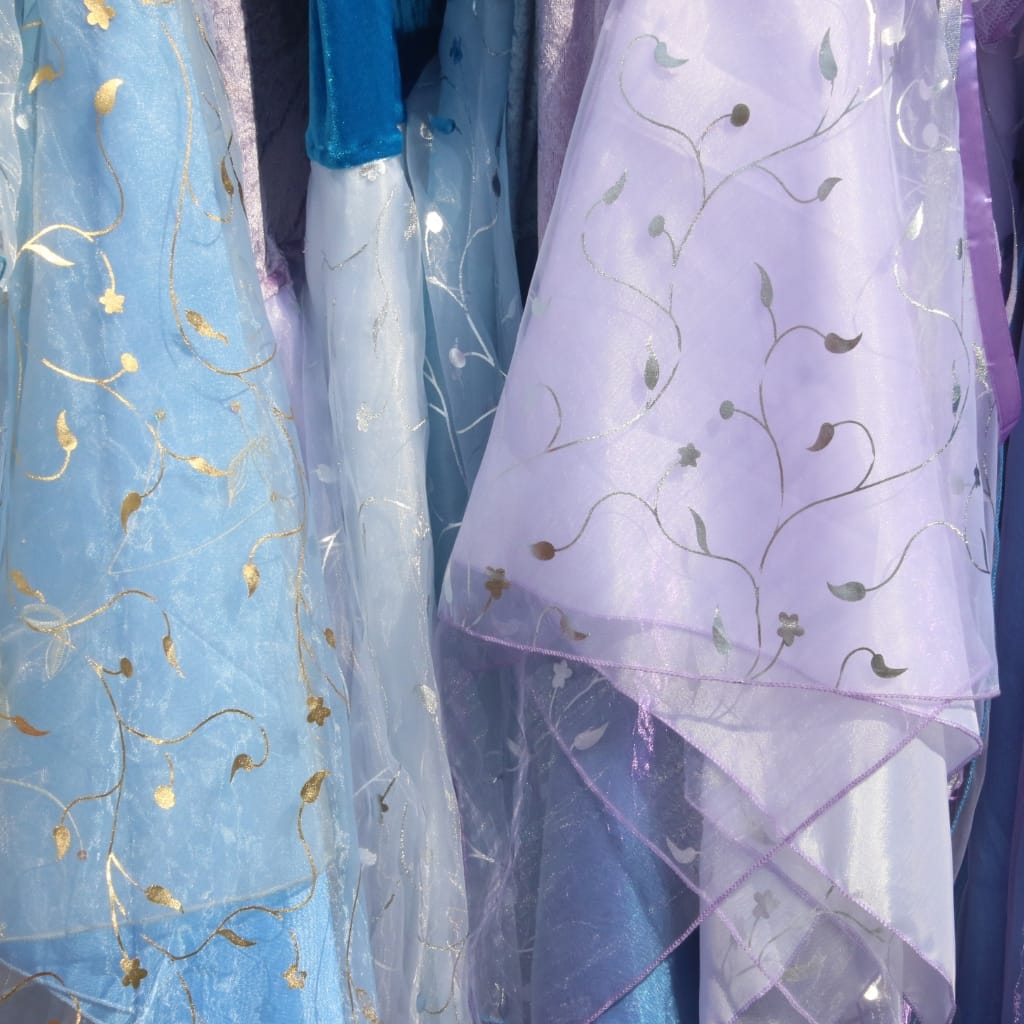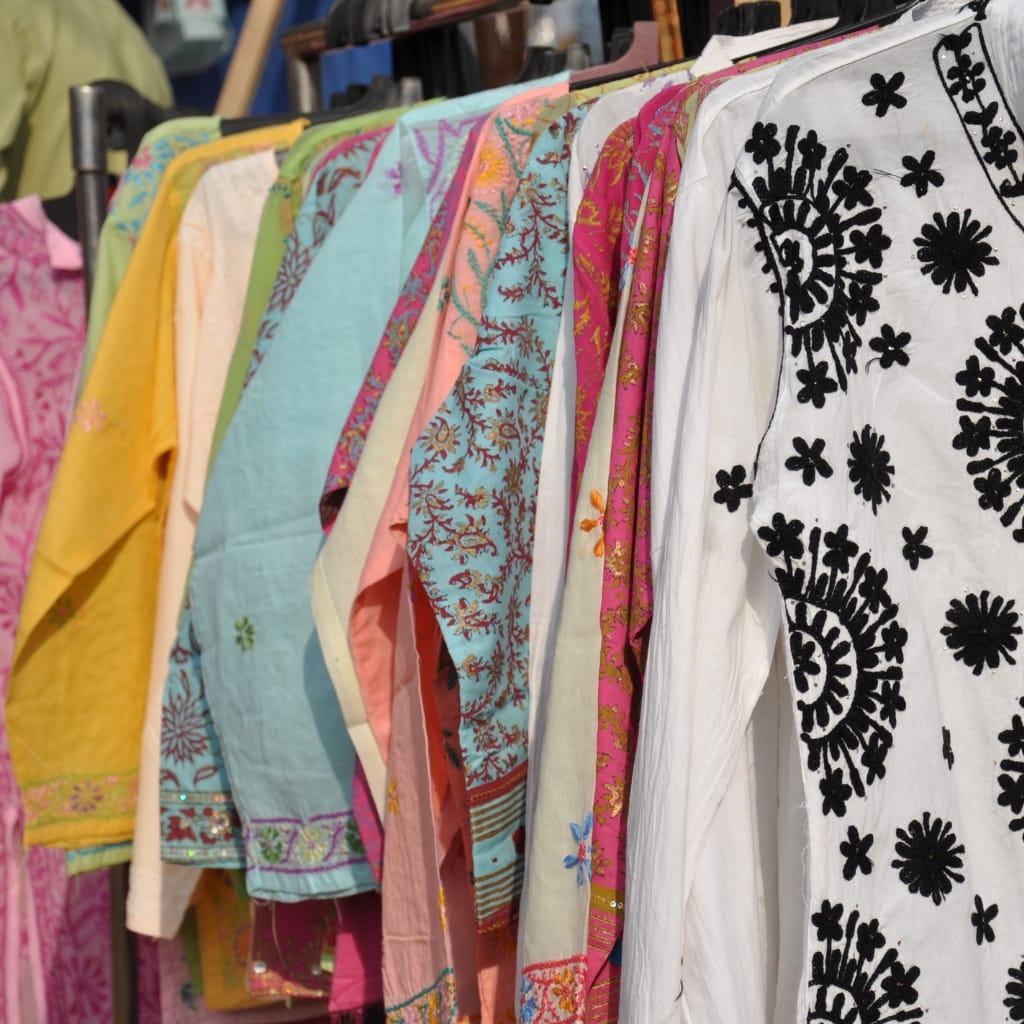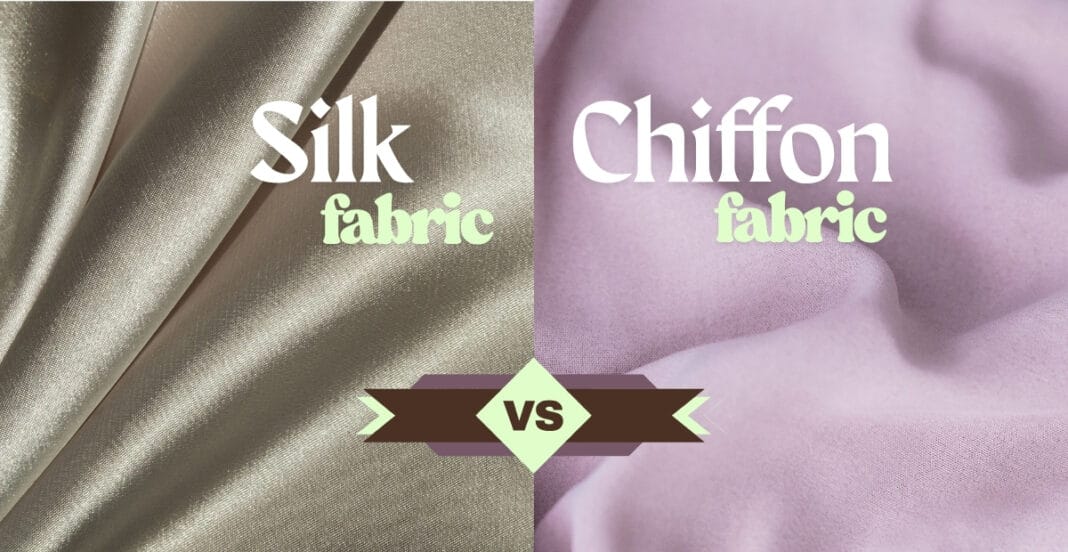When it comes to elegant clothes, few fabrics can top silk vs chiffon. Each looks expensive, catches the eye, and feels like a gentle hug on the skin. Yet, put silk beside chiffon and their personalities stand out. Silk wraps you in rich, smooth warmth. Chiffon floats over the body with a feather-light curtain of soft drape. Sewing, styling, or simply slipping these textiles on, knowing what each offers helps you grab the right roll or swatch.
So what really sets silk apart from chiffon? Is one stronger or airier than the other? And which is best for a flowing dress, an evening scarf, or a tailored shirt? Well talk care tips, too, because your garment stash depends on clean, simple upkeep. In this friendly head-to-head guide, lets peel back every layer of silk vs chiffon, from roots and feel to smart uses and long-term bang for your buck. By the last word, you should know which star fabric suits your next project or closet upgrade.
Table of contents
- Origins and Composition of Silk and Chiffon
- Texture and Feel: Silk vs Chiffon on the Skin
- Appearance and Drape in Fashion Design
- Durability and Wear Over Time
- Breathability and Comfort in Different Climates
- Best Uses for Silk and Chiffon in Garments
- Maintenance and Fabric Care: Silk vs. Chiffon
- Environmental and Ethical Considerations
- Price and Accessibility in the Market
- Conclusion
- FAQs
Origins and Composition of Silk and Chiffon
Silk is one of the oldest luxury fabrics known to humankind. It begins life in the tiny, twisty cocoon of the silkworm. That small insect munches mulberry leaves, spins a long, silky thread, and curls itself to nap. Farm workers carefully unwind those threads, clean away gum, and spin them into smooth yarn. The end result is a protein-based texture prized for its natural glow, soft hand, and luxurious feel.
Chiffon refers to a particular weave rather than a single fiber like silk. The weave itself is light, almost transparent. Chiffon may be woven from silk, polyester, or nylon yarns. Long ago, artisans used only silk threads to craft it. Today, factories mostly rely on synthetic strands because they cost less and resist tearing.
Think of it this way: silk is an actual fiber, while chiffon names the way that fiber, or any other yarn, is woven together. That difference sits at the heart of the silk versus chiffon conversation. You can certainly find silk chiffon-a delicate twist that blends the two terms-yet you should not assume every sheer piece labeled chiffon uses silk. Likewise, silk appears in many other weaves like charmeuse, satin, or habotai, so the name alone does not guarantee softness.
Texture and Feel: Silk vs Chiffon on the Skin
Running a hand over silk feels like sliding across calm water. Its surface is buttery-smooth and carries a gentle weight that molds to your shape. At first, silk feels distinctly cool against bare skin. Moments later, the fabric warms up to match your body, making it comfortable in both hot and chilly weather. Wispy chiffon, on the other hand, has a fluttery touch that brushes lightly over the skin without ever clinging. Though it lacks silks deep drape, that airy quality keeps the wearer feeling free and breezy all day.
Chiffon feels quite different from most fabrics. Its texture is airy, a little gritty, and finish dry to the touch. That thin, see-through cloth floats just above the skin. It carries a crisp feel and can itch slightly, particularly when woven from polyester. Silk chiffon, on the other hand, drapes more gently and breathes far better than the plastic kind.
In everyday outfits silk does a better job of keeping things comfy when a garment sits close. Chiffon, however, loves to show up stacked on top of itself or as a light overlay. It gives shape and movement, but designers rarely use it by itself unless the cloth is lined or matched with something sturdier.

Appearance and Drape in Fashion Design
Both silk and chiffon are eye-catching but each plays a different role on the runway. Silk carries a built-in glow that sparkles whenever it catches a beam of light. The fabric drapes effortlessly, molding to curves and sketching a sleek line. Designers tuck it into evening gowns, lounging robes, dressy blouses, and even luxury sheets.
Chiffon, by comparison, sits mostly matte or only semi-transparent. That quality makes it look airy without being too shiny or demanding. Because it lacks the cling of silk, the fabric floats on the breeze instead of hugging hips or shoulders. Wind passes through, pushing the cloth up, down, and sideways in an easy dance. For that reason fashion houses reach for chiffon when crafting sleeves, cascading layers, or breezy A-line skirts. It injects romance and drama while still staying light as whispered footsteps.
Silk and chiffon obviously both show up on fancy runways and at weddings, but each chips in a different vibe. Silk struts in with body and a hint of matinee-star glam, while chiffon floats in like a whisper of the breeze. Depending on the mood you want, one fabric definitely delivers the feeling youre after.

Durability and Wear Over Time
Silk seems fragile, yet the thread itself is tougher than most people guess. Produced by silkworms, that fiber is one of natures little powerhouses. Trouble brews when the fabric sits in sunlight, meets rough soap, or is dragged through a hot dryer. Add a sudden splash of water or a long day in a folding chair, and you get spots or wrinkles that shout, Im unguarded.
Chiffon, especially the polyester kind you find at craft stores, takes harder knocks without flinching. Its colors stay bright, it resists sagging, and it bounces back after a tumble in the washer. True, a careless ring from cheap jewelry or a snag on a rough bench can make it pout. If you clean it gently and store it folded, chiffon stays lively for many seasons.
That leaves us in a tie when deciding between silk and chiffon for everyday action. Silk appreciates TLC and rewards it with long-lasting elegance. Polyester chiffon feels sturdier but lacks the quiet opulence silk drapes on your shoulders. Pick your fabric according to how much pampering you plan to give it.
Breathability and Comfort in Different Climates
Once, sailors carried it because it absorbed sweat while looking cool as a fresh sea breeze. It stays chill on scorcher days, dries quickly, yet still feels toastier than most sinthetics on brisk nights. That hidden feature explains the obsession with silk pajamas and sheets-row after row of glowing reviews that say, You wake up comfortable no matter what the thermostat does.
Chiffon doesn’t let air move through it very well, and that gets worse if the fabric is all-human-made. Because synthetic chiffon doesn’t drink up sweat, it can turn sticky when the weather is muggy. Even so, its see-through look tempts designers to pile on layer after layer. And that packed-up style blocks breeze so much that the outfit feels hotter than it looks.
On a blazing day, a lightweight silk piece stays comfy because silk lets air pass and soaks up moisture. Chiffon can still suit light summer dresses or loose tops, yet when the mercury climbs, it falls short. So in the silk-versus-chiffon showdown, silk easily wins for breathability and sweat control.
Best Uses for Silk and Chiffon in Garments
Silk really shines in clothing that needs to look fantastic and perform quietly. Picture soft silk shirts, crisp blouses, elegant daytime dresses, lovely scarves, cozy loungewear, or even a glowing bridal gown. The way silk drapes and hugs the body makes it perfect for anything worn right against the skin. Designers love to line jackets or to trim other pieces with that same luxuriously soft fabric.
Chiffon, on the other hand, takes movement center stage. The airy weave is perfect for floaty overlays, ropy wraps, layered skirts, and floppy sleeves. The fabric pops up in dance costumes, bridesmaid sets, evening gowns, and even colorful sarees. Chiffon can add a dreamy, romantic touch that plain silk by itself simply cant give.
Silk also carries enough structure to support sharper lines. Chiffon, however, is all about airiness, so it drapes and flutters without holding a shape. Often the loveliest pieces mix the two fabrics. Pulling a sheer chiffon panel over a silk base lets each textile shine, while the outfit feels as light as a cloud.

Maintenance and Fabric Care: Silk vs. Chiffon
Silk is a diva among fabrics. Most of the time, it wants a trip to the dry cleaner. You can hand-wash it in ice-cold water with a silk-safe soap, though. Just never wring it or twist it. Lay it flat to air-dry, away from blazing sun. Direct sunlight turns rich colors to ghosts.
Chiffon plays by different rules, depending on the fiber. Silk chiffon wants the same tender care as regular silk. Polyester chiffon, however, likes the washing machine. Slip it into a mesh bag, set the washer on gentle, and use cold water. Heat is the enemy, so hang it or lay it flat. For drying, never drape it over a hot radiator or dryer grate.
When the pieces are dry, a cool iron on silk needs a cloth between it and the panel. Chiffon, however, prefers quick bursts of steam. Always test a hidden corner first so you dont scorch.
If fuss-free laundry tops your wish list, go with polyester chiffon. If true luxury tugs at your heartstrings, silk gladly rewards extra work. Either way, these two siblings each have a place on the rack.
Environmental and Ethical Considerations
Real silk is a 100-percent natural fiber. That sounds great until you learn the life-cycle secret: workers usually boil the cocoon to shut the pupa inside. For many people, that tiny sacrifice feels wrong, even for beauty. So brands now offer peace silk, or Ahimsa silk, which lets the moth hatch out before the thread is harvested.
Chiffon made from polyester, on the other hand, comes from oil. Its shreddable, not biodegradable, so it can hang around for centuries. Enter recycled polyester, a friendlier version. Made from discarded bottles and old clothes, it skips many wild-energy steps in production. While new polyester may suffer during every wash, turning fragile ocean habitats into tiny fleeces, its recycled sibling keeps plastic out of the trash, swapping one big problem for a smaller one.
Inside the silk-vs-chiffon talk, pure silk sweeps most green votes because its threads come from nature and break down after use. The truly gentle choice, though, is peace silk, which treats the worms kindly and still delivers that silky glow.
Price and Accessibility in the Market
Silk rarely comes cheap. Turning thousands of silkworm cocoons into one single yard requires hours of careful handwork-a process as old as most kingdoms. Because of that hard work, genuine silk holds a good reputation for comfort and drape that never fades, even after centuries.
By contrast, chiffon often costs much less, especially the plastic version. Polyester chiffon rolls off giant machines and lands in stores by the bolt. Even a yard of silk chiffon is cheaper than the classic charmeuse cut.
So, when a budget-friendly look tops your list, chiffon wins every time. Silk, however, anchors itself at the high end because its strength and feel remain priceless.
Conclusion
Silk and chiffon speak different style languages but both carry charm. Silk drapes like a calm river, breathes with your skin, and whispers luxury. Chiffon, on the other hand, floats like a cloud, bringing flutter and ease to dresses, blouses, and shawls alike.
Pick between silk and chiffon by asking what the moment calls for. If you need everyday grace or a polished finish for wedding portraits, silk simply cannot be beaten. But when a dreamy, layered silhouette or breezy summer look is on your mind, chiffon rushes in like an old friend.
From a distance, silk and chiffon look almost the same. Walk closer, however, and their textures light up in opposing ways. Both belong on runways and inside your closet. Know their secrets, and you dress each piece where it shines best.
Read more what is chiffon fabric
FAQs
It depends on your needs. Silk is smoother and more breathable. Chiffon is lighter and more affordable.
Only polyester chiffon can handle a gentle machine wash. Silk usually needs dry cleaning or hand washing.
Silk is more costly, especially natural varieties. Polyester chiffon is far more budget-friendly.


